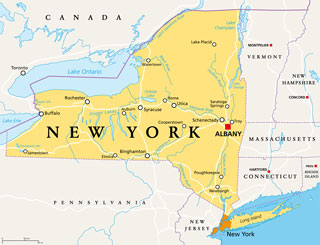- Home
- TrainingABC Blog
- News
- New York State’s New Pay Transparency Law
New York State’s New Pay Transparency Law

Author Name: TrainingABC
Posted: 01-16-2023 02:26 AM
Views: 3081
Synopsis: Learn about the specifics of New York state's new pay transparency law.
Building off of New York City’s pay transparency law that went into effect on November 1, 2022, Governor Kathy Hochul signed a statewide pay transparency bill, officially making it a law. The new law will go into effect on September 17, 2023, requiring employers to follow its guidelines and adjust hiring and pay practices accordingly.
Like many other states that have enacted pay transparency laws, New York is building the framework to decrease pay gaps based on gender, race, and other factors. While these laws are beneficial for job seekers and offer a new line of information to employees, they require employers to change their practices. Adjusting company-wide hiring and recruitment practices can be a challenge but working within the confines of new laws helps protect workers and employers alike. Here’s what every employer in New York needs to know before the law is active later this year:
Who’s Impacted?
The new law requires employers within New York State that have four or more employees to follow its guidelines. While the water gets a bit murky around remote work and whether or not all four of those employees have to be based within New York, many employers in the state will be impacted. The law does cover jobs that can be performed in the state, so it’s likely to apply to remote work postings as well, especially if the parent company, supervisor, or role are based – in part or in full – in the state of New York.
What are the Requirements?
To provide more transparency around wages, salaries, and role pay scales, this law requires that employers include compensation information for all new jobs, promotions, and transfer opportunities. The compensation information can be a range, including both a low-range number and a high-range number, in either hourly or annual format. Some jobs have an hourly-based pay scale, while others are traditionally salary-based. This law encompasses both categories of employment.
If a job is paid on a commission basis, that information must be disclosed in the listing. Another major requirement of this new law is that if a job description exists for a role that is open, it must also be included in the posting. However, the details on exactly what constitutes a “job description” are a bit vague and a job description does not need to be created prior to advertising a position if one does not already exist.
Employers are also required to keep records of compensation throughout history. Each position should have a historical account of job descriptions and hourly wages or annual salary ranges. It is up to each employer to ensure that their hiring practices are updated and that their record-keeping infrastructure is compatible with the law.
Do Penalties Exist?
If there is an instance of noncompliance, applicants and employees can file a claim through the New York Department of Labor. From that point, the DOL will investigate the claims to determine a course of action. If a violation is found, penalties can be up to $1,000 for the first violation, up to $2,000 for a second violation, and up to $3,000 for a third or subsequent violation. Employers are also forbidden from taking retaliatory measures against individuals that file claims with the NY Department of Labor.
Invest in the Future
Countrywide, things are changing. Expectations around how employers attract, recruit, and hire talent are changing in many ways. Although reconfiguring a new internal system for these activities requires a lot of lift, pay transparency is the future. Businesses of all sizes need to be adapting to new laws and policies, signaling to employees and governing bodies that they are ready for what’s to come.
